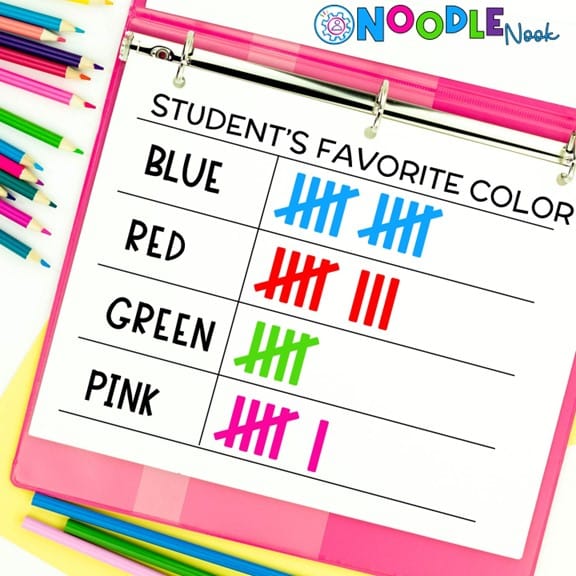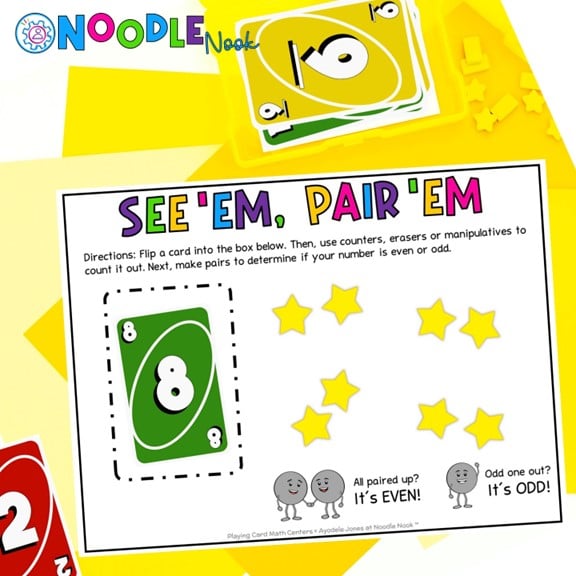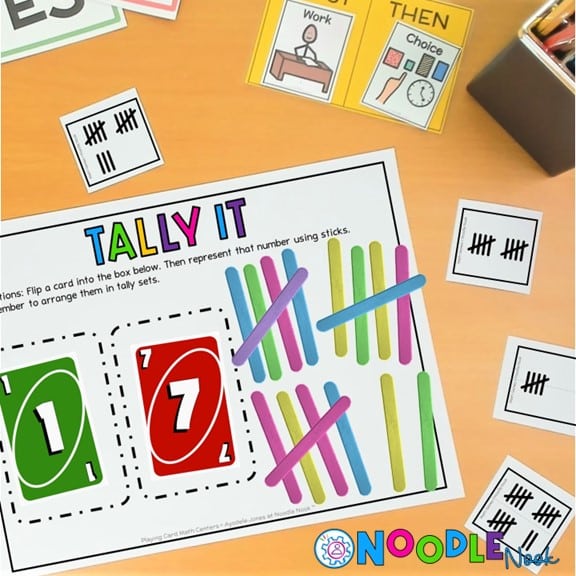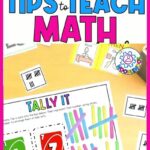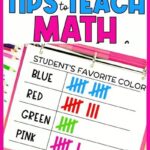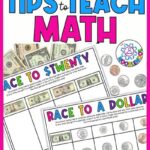Math is one of those subjects that carries a lot of baggage for people… they either love it or hate it. For teachers, the challenge of how to teach math in special ed meets how to make math meaningful for students who have significant disabilities. Relax. We have the top ten tips to teach math in special ed.
Why Is Math in Special Ed so HARD?!?
Yes, it’s true. Teaching math concepts to students who struggle with spatial awareness, memory, and recall, or communication skills is harder. But that doesn’t mean it’s impossible.
Part of the challenges with teaching students who have disabilities is teaching to their strengths and overcoming any weaknesses. This can help them access their enrolled grade-level curriculum. But, with so many levels and disability types in the classroom, where do you start? Good news here is that there are several ideas on this list that will work for students with a variety of disabilities as well as general education students who are struggling to grasp an idea or math concept.
No matter the tip you decide to implement, remember that if a student isn’t learning, it’s up to us, as teachers, to adjust what we’re doing. It is not up to the student to just ‘figure it out’.
With that said, here are some top tips on how to teach math in special ed to students with complex access needs.
Top Ten Tips to Teaching Math in Special Ed
1. Incorporate Visual Supports
You knew this was coming, right?
Visuals are essential for special education.
Why? Because adding visuals to your math instruction supports students in a variety of ways.
First, it can explain concepts and ideas in a more concrete way. Math is extremely abstract. The addition of a visual can mean that a student who struggles with the abstract can make sense of math with something more understandable.
Second, visuals can help student process through complex tasks more independently. Sometimes our students are learning steps to a process insolation or with a targeted focus. Then, when it comes time to string skills together, it can be a challenge. With a task analysis strip or processing visual, a student can be more independent in getting through a set of skills. It can also support students who have memory and recall issues to know what’s next. This type of ‘what do I do next’ visual can be extremely helpful with prompt dependency, recall issues, motivation, and even attention. Winner-winner.
Third, visuals can target behavior and improve motivation and engagement, like when you use a token board or first-then visual. These are teacher gold! If you don’t use them yet as part of your instruction, make that correction today.
2. Use Hands-On Items
The next top tip to teaching math in special ed is hands-on items. Just like visuals, tactile supports can help contextualize abstract ideas and concepts. Likewise, they support students who learn in a variety of ways.
Also, consider how you can use hands-on manipulatives for students to demonstrate mastery. When students struggle with writing or speaking, it can be hard to assess them and make data-driven decisions about progress. By allowing a student to use hands-on demonstrative ways to show what they know, you allow them greater access to future skills and an ability to engage in lessons in a way that is meaningful to them.
If you don’t love hands-on manipulatives and items in your math instruction per se, then try digital math manipulatives, which are available online. They make instruction ‘hands-on’ without all the stuff.
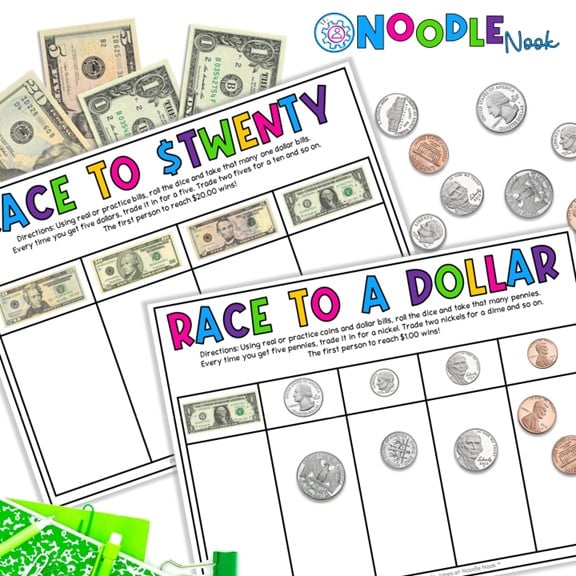
3. Solve Real-World Math Problems
Incorporating real-world math problems into regular instruction is one of the most effective teaching strategies for students with disabilities. This approach is not only a great way to engage students, but it also makes the math concepts relevant and interesting.
Also, by providing real-world math problems, students have the opportunity to practice the math skills and concepts that they can and will use in real life. That means, as a teacher, you’re building the functional academics that will support them in the postsecondary.
4. Integrate Technology Tools
A math teacher once said learning how to solve math problems the long way and without a calculator was a critical skill. After all, he pined, you aren’t going to be walking around with a calculator in your pocket when you grow up.
Oh, how little he knew.
And, how little WE know. We have no idea where technology will take our students. At the beginning of my teaching career, math goals centered around check writing were commonplace. Now, I can’t think of the last time I wrote a check nor can I think of why I would need to target that skill for students.
In the classroom, this all has one resounding message; Incorporate technology tools.
First off, tech tools can provide a student with a significant disability with the additional support they need to be successful. That affords them more opportunities to engage with the material and tackle more challenging ideas on concepts. Include the use of normal math tools, like graphic calculators or interactive whiteboards, to help make abstract concepts more concrete. Also, use productivity tools and phone apps to support access, like with text to speech, Google, AI, and more. These are part of our daily lives now and can provide additional support for students with a disability. After all, isn’t it just as important to know how to phrase and evaluate a math problem as it is to solve it? With tech propelling the next generation into the unknown, my guess is yes.
5. Include Group Work
Students with significant disabilities usually struggle with more than just academics. They have a hard time with the functional skills they need to make them successful after graduation. That includes things like communication skills, social skills, interpersonal skills, and problem-solving.
By incorporating group work in math instruction, you have a way to target these skills. Group work is an opportunity to collaborate, problem-solve, and communicate with peers. When it comes to how to teach math in special ed, small groups afford more opportunities for social interactions and learning. On top of that, consider using a cooperative learning model in your classroom to promote these interpersonal and communication skills.
6. Model Good Math Behavior (and Language)
Modeling how math is done is part of explicit instruction in special education. That includes modeling good math behavior as well as using math language in an effective way. Using this visual path and auditory path to lesson content is a great way to teach students with significant disabilities how to approach and engage with math problems.
Also, remember to use a think-aloud strategy to demonstrate the correct way to approach and solve a problem. With that comes the use of math vocabulary in context. All in all, this is a great way to provide students with special needs with the best type of model so they can replicate the behavior.
7. Reward Students for their Effort
There’s nothing more discouraging than being told ‘that’s not right’.
Seriously.
Nothing.
But I’ve seen it over and over where teachers or paraeducators have inadvertently discouraged a student when they put in the effort but still fall short of the correct answer. That is not how to teach math in special ed!
Positive reinforcement can be an effective way to motivate students with significant disabilities, so don’t be afraid to put out lots of encouragement. Recognizing and rewarding students for their efforts as much as their successes in math, it can encourage them to continue to engage with the material and try new things, even when they fail the first time. That perseverance is hard to teach out of context, so reward attempts and effort. Sometimes learning by making a mistake is a more memorable experience for students.
8. Practice Independently
Prompt dependence is a thing, really. It’s part of learning in an environment full of people who really want to give you all the supports you need to be successful. Unfortunately, that prompt dependence can be a severe limitation over time.
As students learn and acquire new skills, be sure to have them practice in an independent setting. Providing opportunities for students to practice math independently allows them to take ownership of their learning and build their self-esteem. The use of manipulatives and other hands-on materials can help make the math concepts more concrete and accessible for students with significant disabilities practicing on their own. As you set up the learning space, be sure students have access to these tools too.
Personally, I believe this is part of why a station rotation model for classroom instruction in special ed is the best option. It is one of the best setups for success in how to teach math in special ed. The next reason is providing guided practice.
9. Provide Guided Practice
Guided practice is where students are working through the lesson or activity with support from a teacher or staff member as they need it. Because the teacher or aide is present and ready to support, a student has a way to work through math problems but can easily seek help.
This approach is an effective way to support students with significant disabilities as they work through math problems. By providing step-by-step instructions, verbal prompts, or visual aids, students can learn how to solve math problems and build their confidence. Moreover, the teacher or adult can make sure students are not internalizing processes that are incorrect or applying methods the wrong way.
10. Make it FUN!
The best all-time greatest top tip for teaching math is to make it fun! Making math instruction fun and engaging can help to increase student motivation and participation in the special ed classroom.
Incorporating games, songs, or other interactive activities can help to make math concepts more interesting and accessible for students with significant disabilities. Besides, when learning is fun, you are more into it, your students learn more, and your math instruction is something everyone looks forward to.
Final Thought on Top Tips for Teaching Math
First off, it’s important to remember that all students are different and may have different needs. Be flexible and adjust your instruction to best meet the needs of your students. Also, these strategies are not mutually exclusive. Combine them and tailored them to your student’s needs and skill levels.
As you read through this list, there were probably some strategies and tips you already do. Great! Put a check next to them. Then pick one or two more to target as personal goals during math time. Slowly find ways to incorporate them into your lessons, centers, and rotations.
Small changes can have big impacts, so when it comes to how to teach math in special ed, start with one small change and grow from there.
WAIT! Before you go, check out all the math resources available in the Noodle Nook store on TpT.

